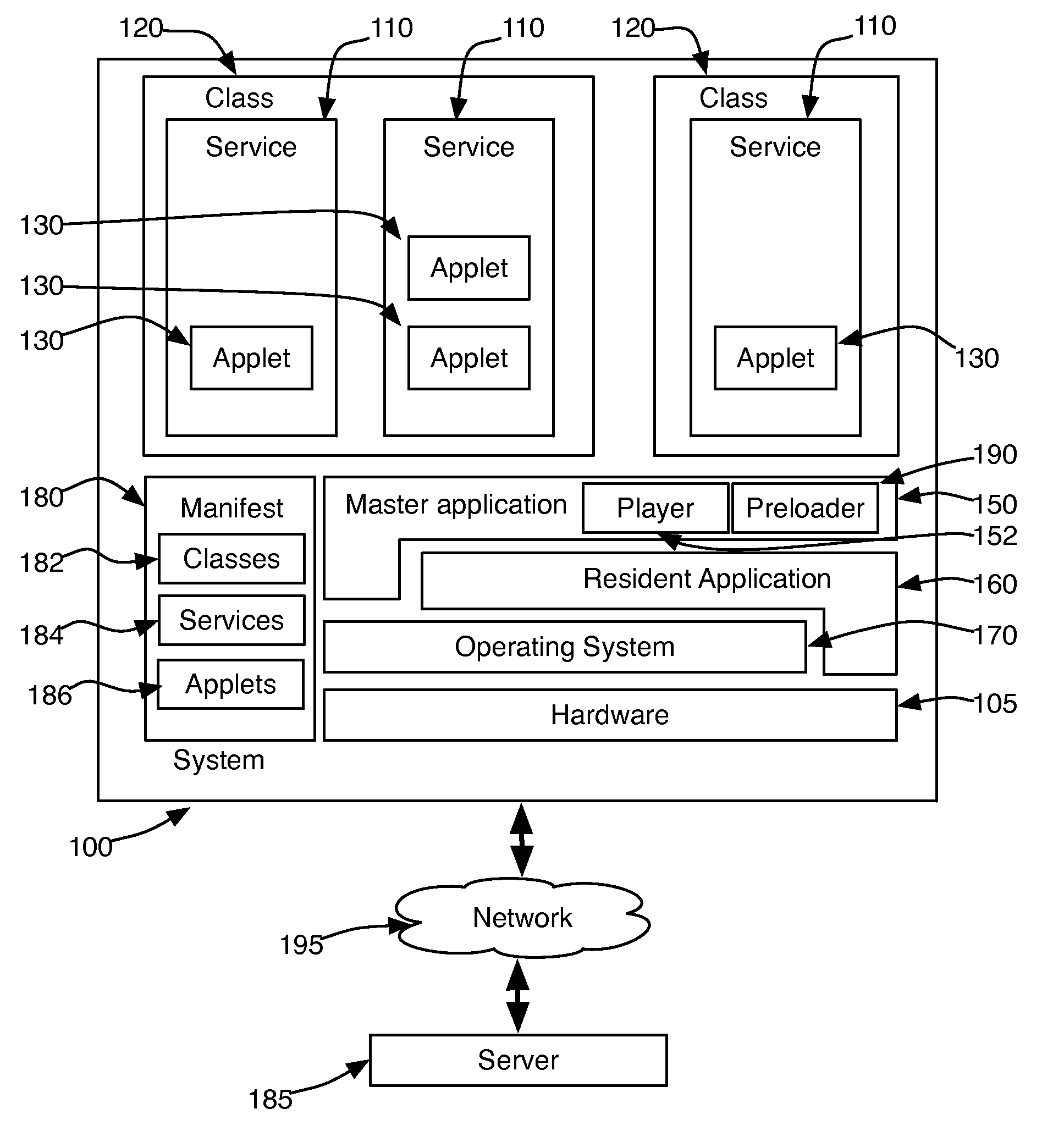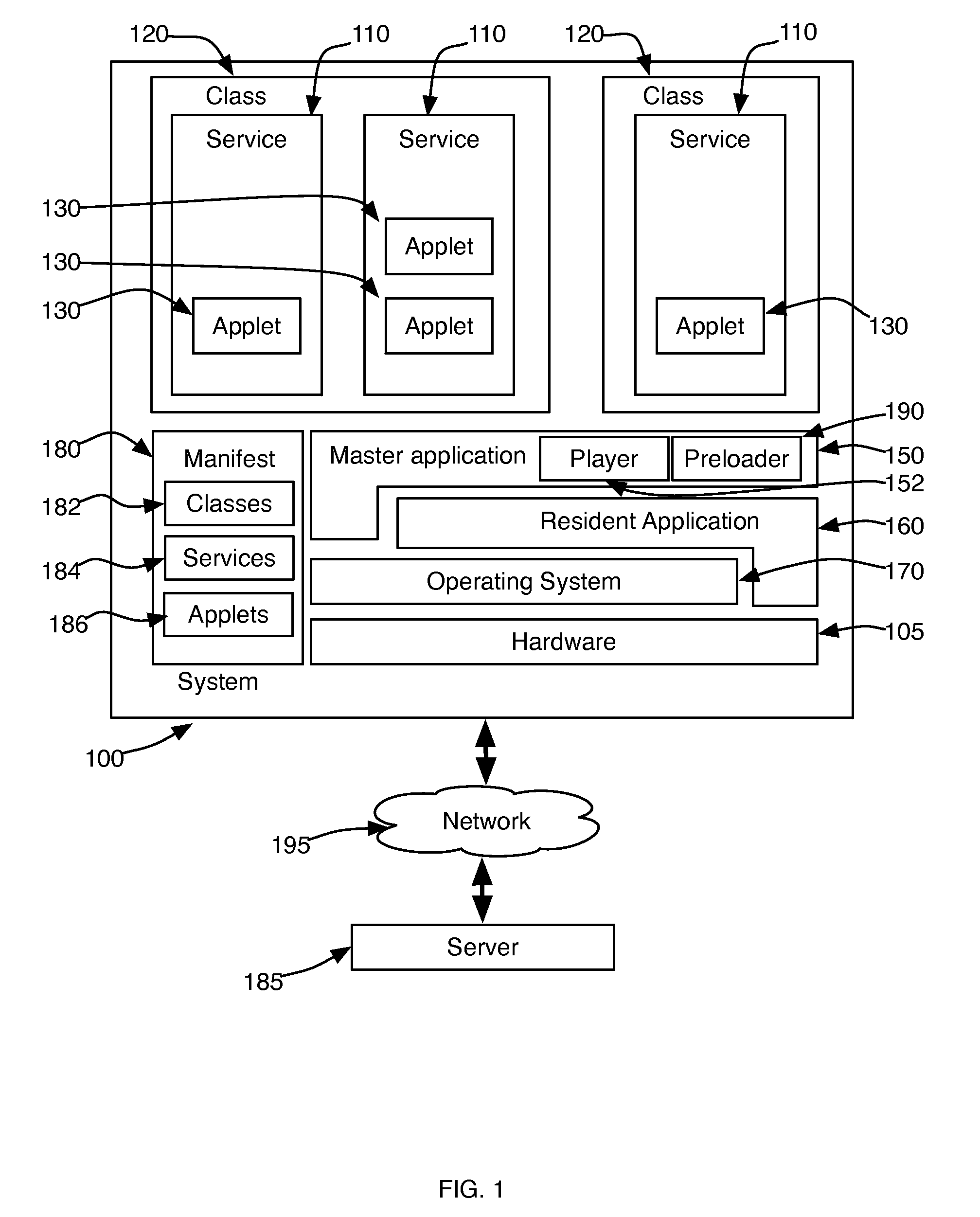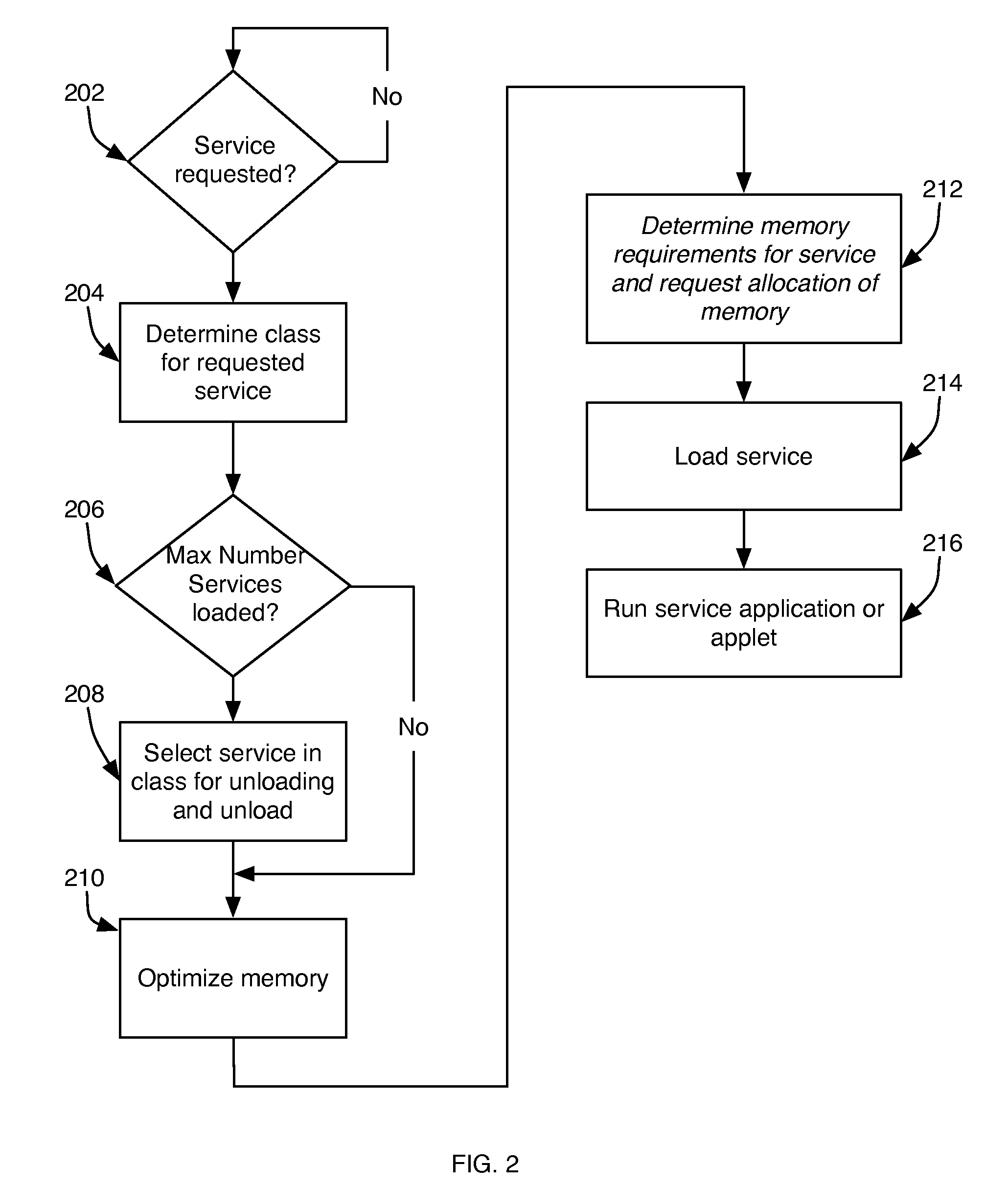Management of Software Implemented Services in Processor-Based Devices
a processor-based device and software implementation technology, applied in the direction of specific program execution arrangements, program control, instruments, etc., can solve the problems of not giving the user explicit control over applications, in most cases not having virtual memory or similar capabilities, and inability to decide when applications are loaded or when applications are quit, so as to reduce memory fragmentation
- Summary
- Abstract
- Description
- Claims
- Application Information
AI Technical Summary
Benefits of technology
Problems solved by technology
Method used
Image
Examples
Embodiment Construction
[0017]The following detailed description is made in reference to a services management system implementing different aspects of a preferred embodiment of the invention. The services management system is intended only as an example to illustrate the subject matter as defined by the appended claims. The scope of the invention is not intended to be limited to this example, but to include such all embodiments and examples coming within the scope of the claims when the terms used in the claims are given their ordinary and customary meaning, and substantial equivalents.
[0018]A service is a unit of user functionality, implemented by one or more programs and / or data files being executed by the user device. A service management system could be implemented as part of an operating system or as a separate program that preferably remains resident in memory and running, and controls, among other things, loading and unloading from memory of programs and resources for providing a service requested ...
PUM
 Login to View More
Login to View More Abstract
Description
Claims
Application Information
 Login to View More
Login to View More - R&D
- Intellectual Property
- Life Sciences
- Materials
- Tech Scout
- Unparalleled Data Quality
- Higher Quality Content
- 60% Fewer Hallucinations
Browse by: Latest US Patents, China's latest patents, Technical Efficacy Thesaurus, Application Domain, Technology Topic, Popular Technical Reports.
© 2025 PatSnap. All rights reserved.Legal|Privacy policy|Modern Slavery Act Transparency Statement|Sitemap|About US| Contact US: help@patsnap.com



